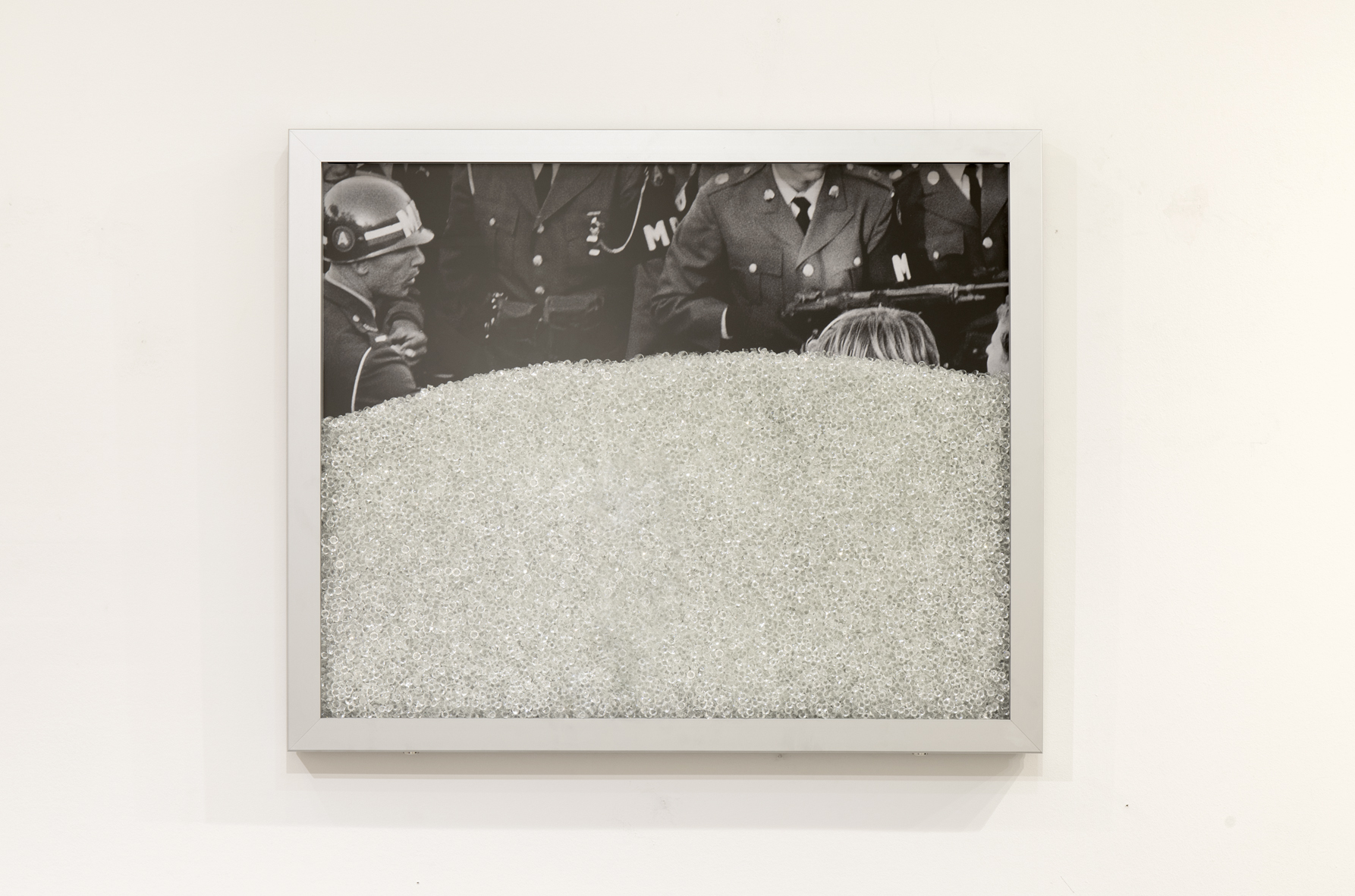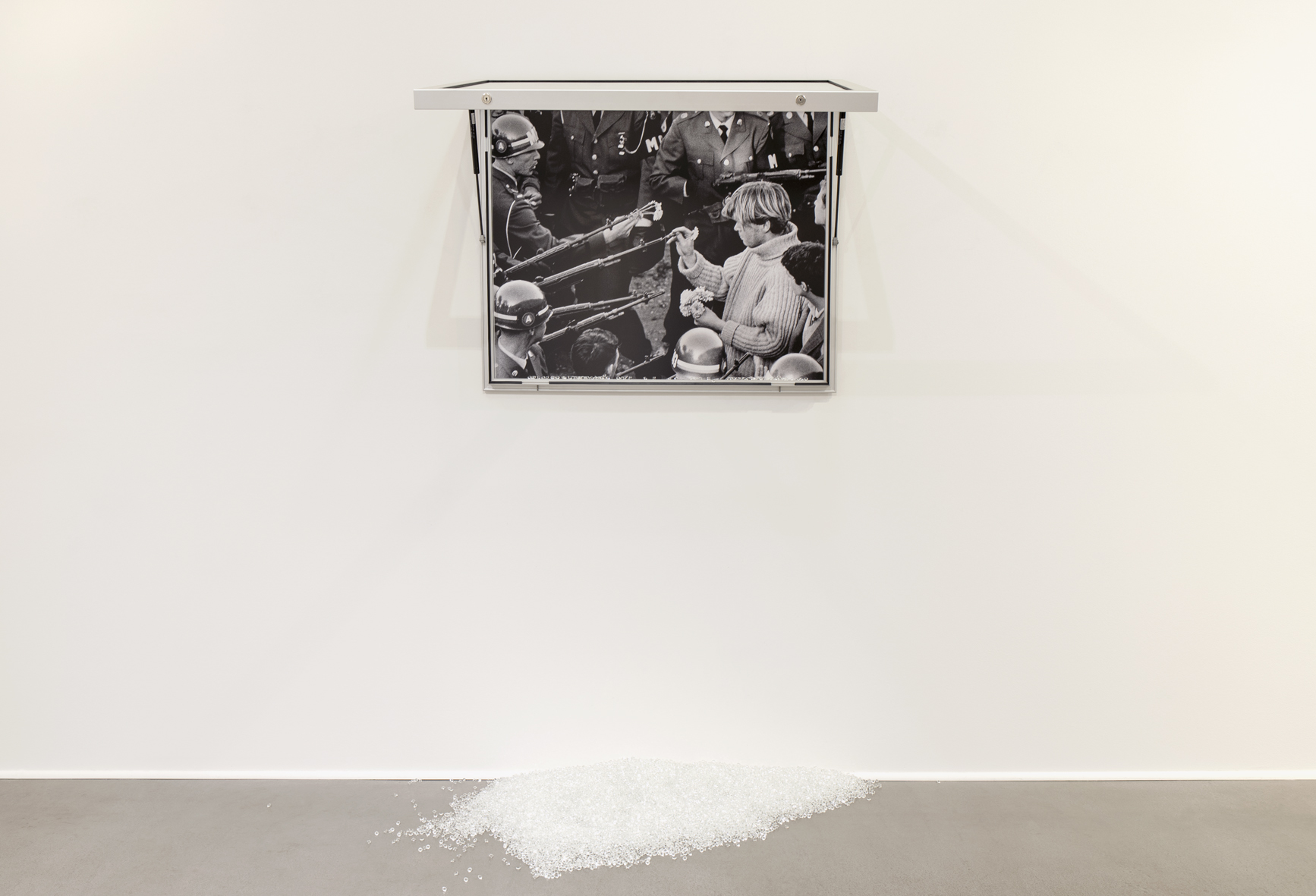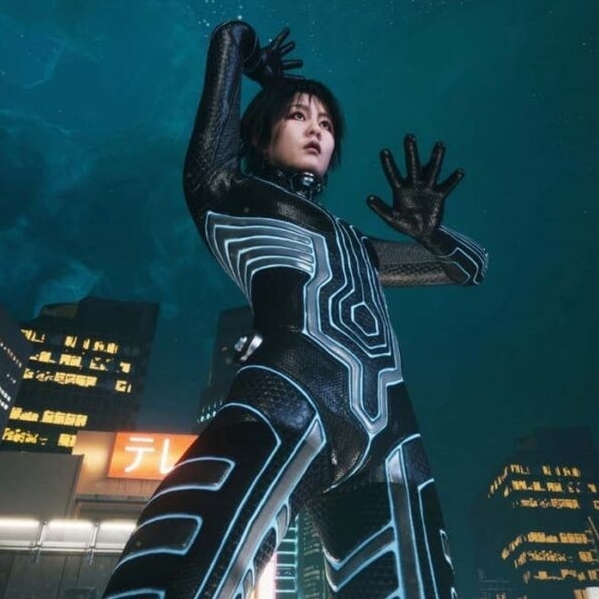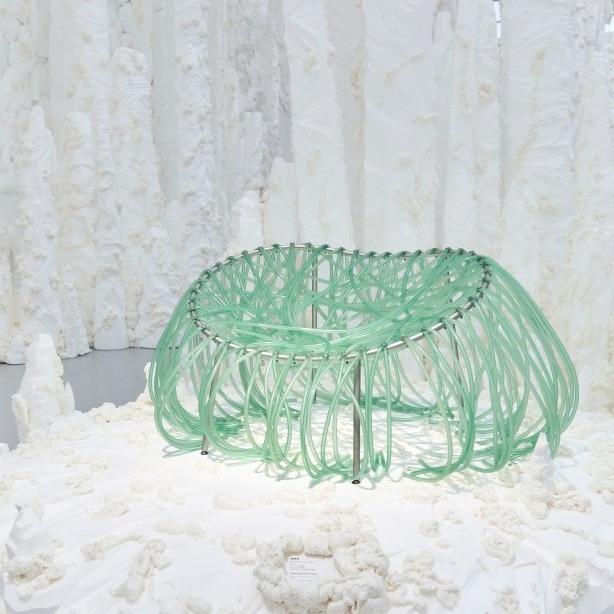From the Chinese Spring Festival through to the spring of 2020, the sudden threat of COVID-19 has swept across China. The abrupt occurrence of this epidemic which later became a pandemic across the world has brought about many unpredictable changes. The pandemic developed in such a quick way that it has posed a severe challenge to all walks of life including art institutions and practitioners around the world. We planned to conduct interviews with people who might have experiences either inside or outside of the pandemic, but it turns out that there are no outsiders or onlookers in this fight. We have spoken to four international artists(art teachers): Wendy Letven, Anna Dumitriu, Michal Martychowiec, David Brubaker and invited them to discuss the influences of pandemic on them individually as well as on the world as a whole.
The pandemic has become a global test for humanity
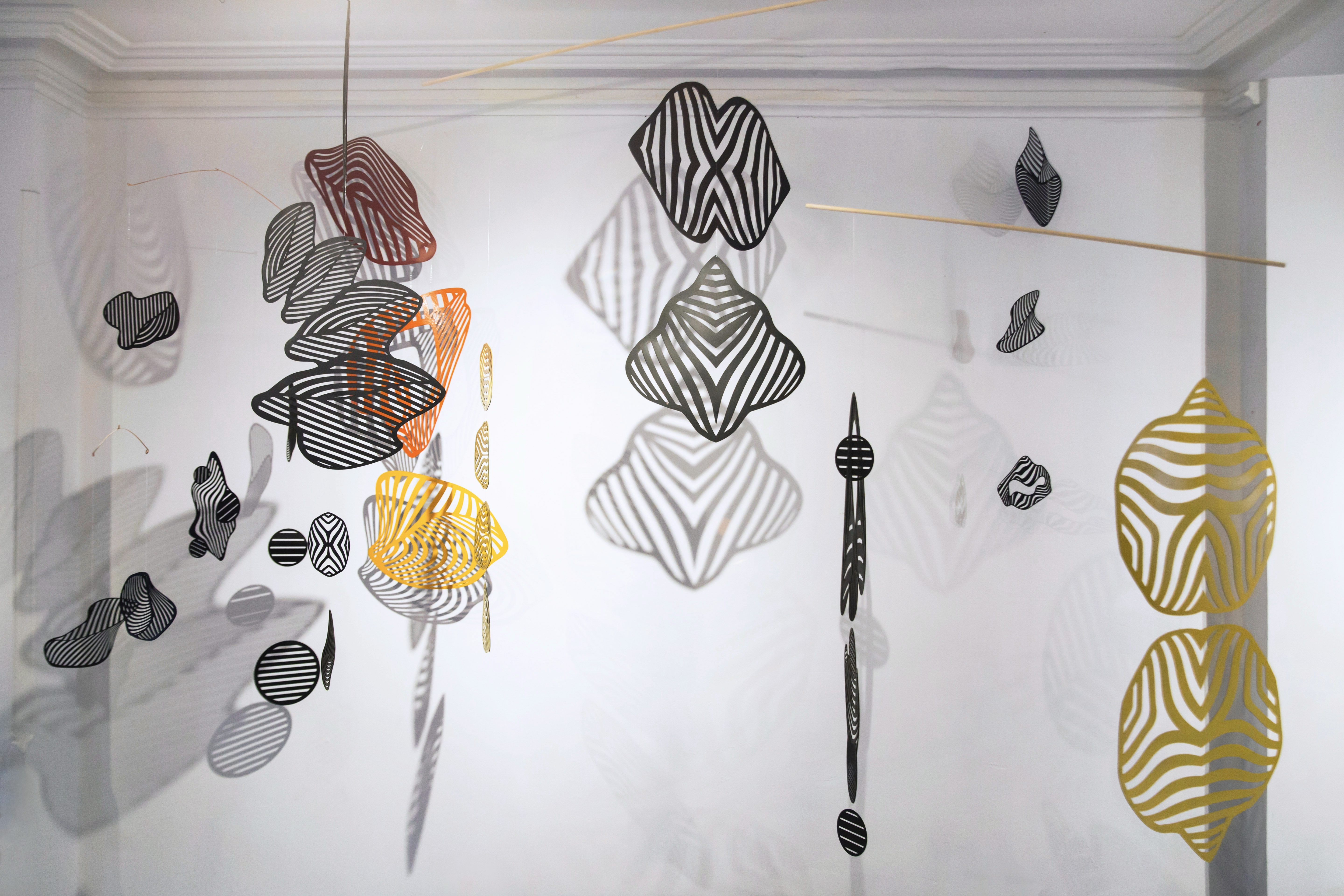
“Gyre”, site-specific installation, Fou Gallery, 2020, part of the exhibit “Lines Falling Together in Time”. Photo credit: ? Lynn Hai.
Wendy Letven was the first one who responded to my interview. She is an artist who is engaged in art practice and teaching art at NYU and at Parsons at The New School in NYC. Her solo exhibition entitled “Lines Falling Together in Time” was unveiled on February 29 at the Fou Gallery in New York. For the pandemic influence and quarantine control, the exhibition is now an Online Viewing Room of the Fou Gallery.

Recent Portrait of Wendy Letven
As she teaches at NYU and Parsons, Wendy was among the first group of Americans who took the pandemic seriously. When the epidemic became a concern for the Chinese students that she taught at Parsons, some of them worked through their fears as they were very worried for their families in China.
She learned about the news of the epidemic in December and she discerned that it might disrupt the lives in the US if it was underestimated. As she puts it, “This epidemic is becoming a global test for humanity and our compassion for one another is being evidenced. The elderly and the sick are most at risk and discrimination is an ongoing challenge. The issue is that this virus has the potential to expose the problems within our healthcare system and our lack of preparation in the face of the disaster in the US.”
Although confronted with this setback as people have to stay at home and keep social distancing, her solo exhibition cannot be viewed in the concrete space, she firmly holds that, “art brings people together and in dark times, it can be extremely up-lifting.” For Wendy, the most valuable thing during the pandemic period is that she has had more time in the studio than ever before and more time to think freely as she has fewer deadlines.
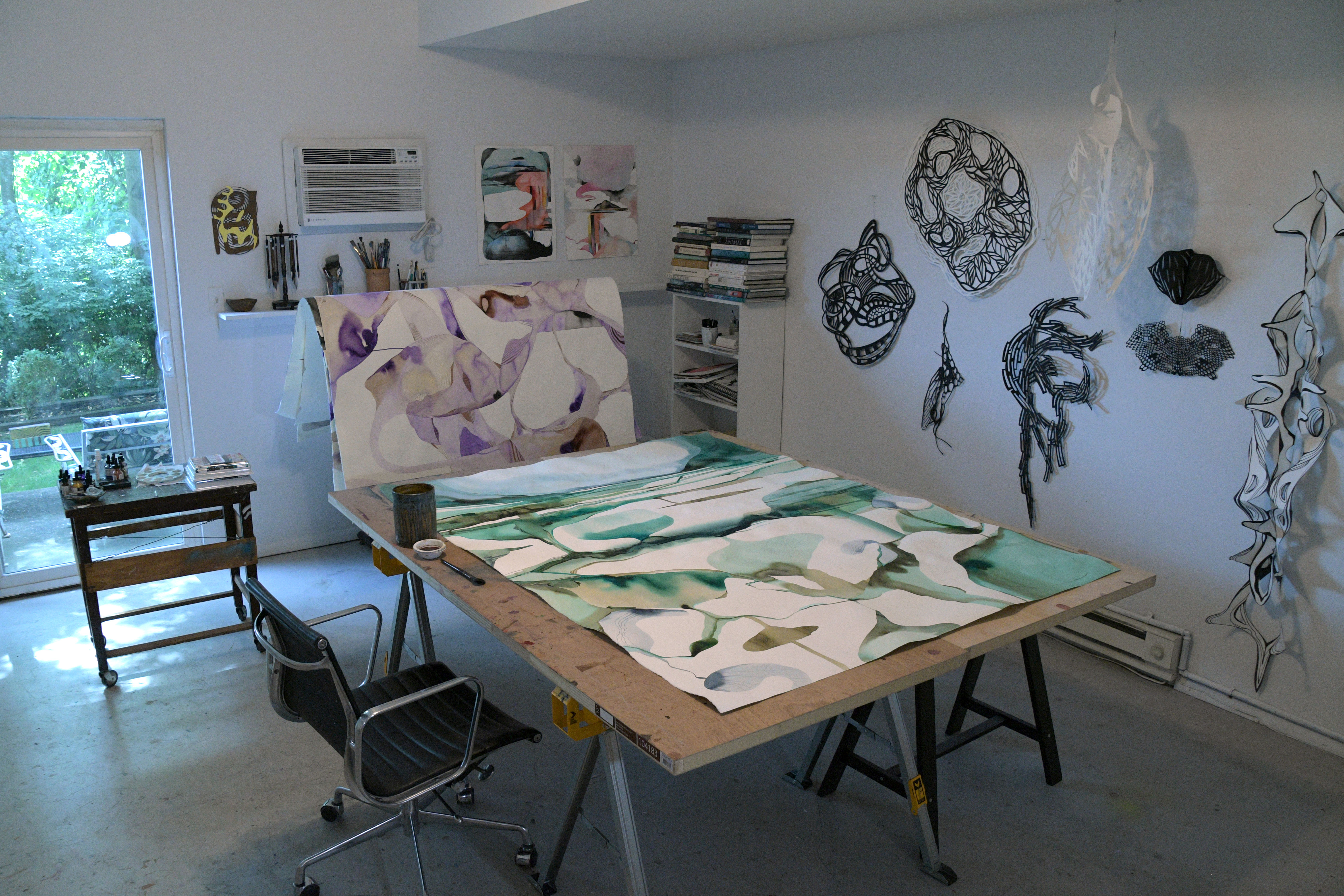
Studio view
Undoubtedly, Wendy Letven has continued working and teaching during this period. Mediums such as paper cutting and ink painting are what she has been involved in, which have also led her to think and research Chinese art from both traditional and contemporary perspectives. She made use of the time to scale up her oil paintings and acrylic ink works while further exploring the nature of more immersive color filled work. “Regardless of what happens, artists will continue to make work and will find interesting and compelling ways of processing a world-wide challenge,” said Wendy Letven when she talked about the role that art can play in the pandemic.
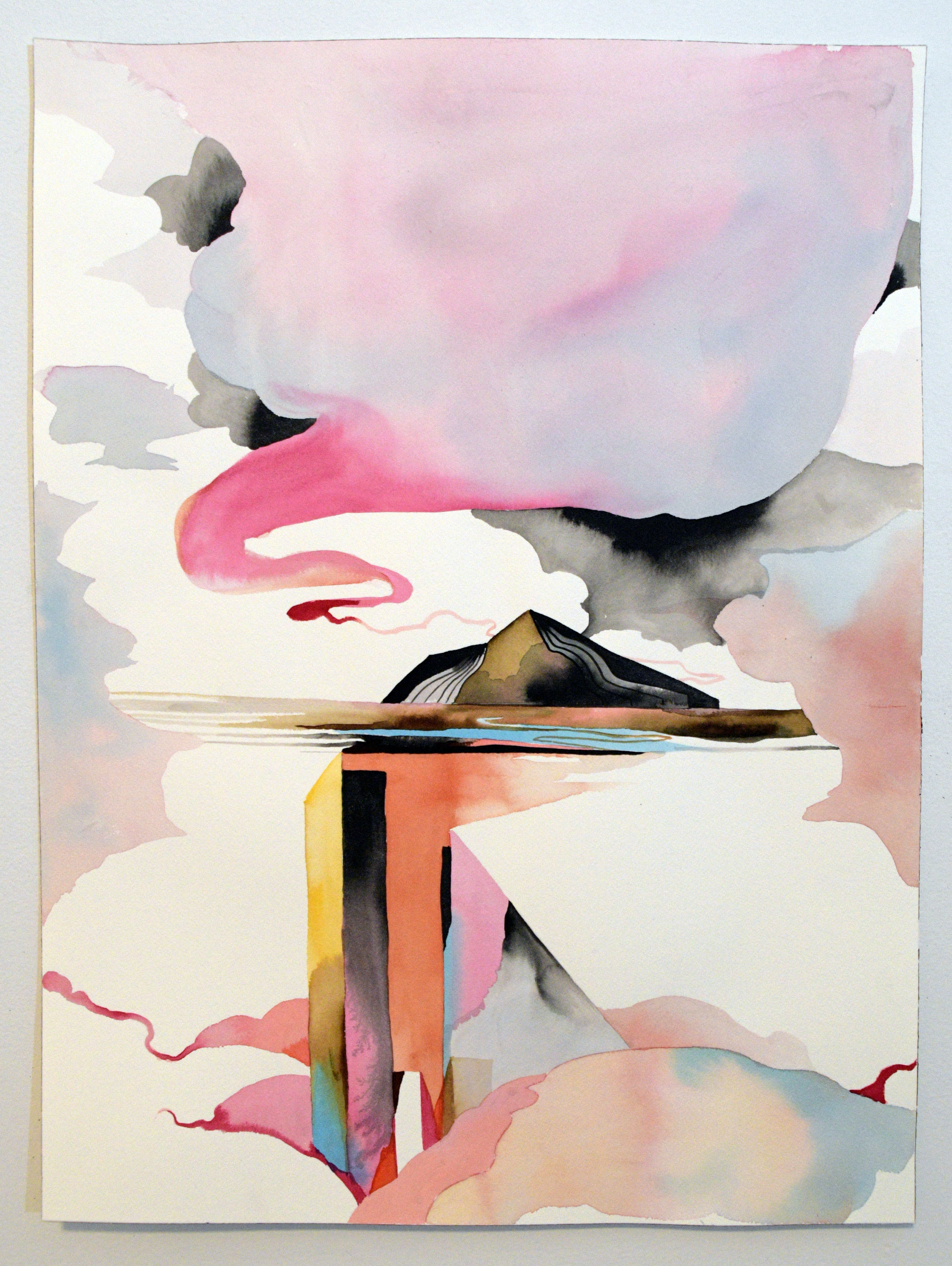
“Remote Places for Remote People Like Us I”
Acrylic ink on rough Arches watercolor paper
24 x 18 inches, 2020
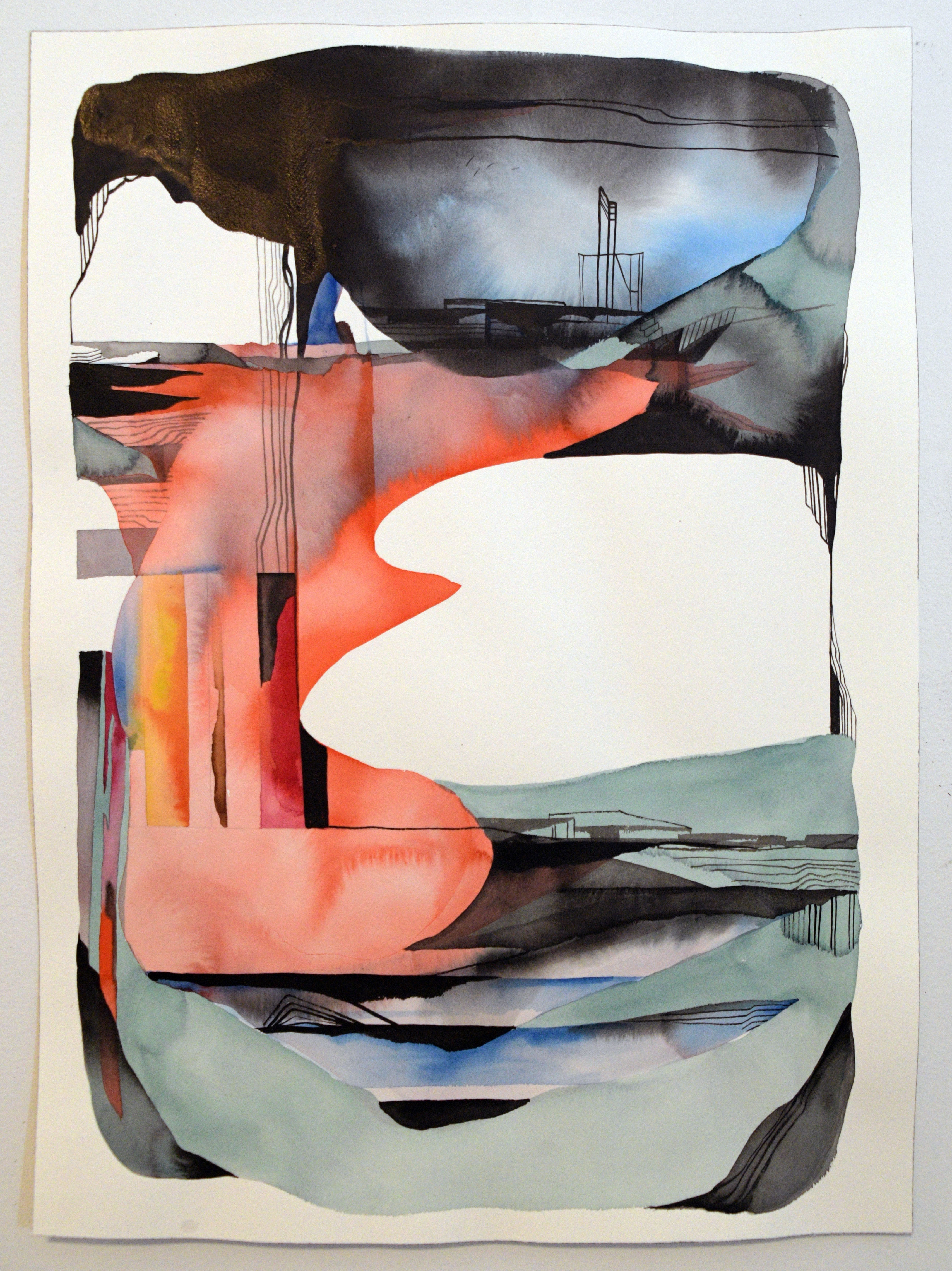
“Remote Places for Remote People Like Us II”
Acrylic ink on rough Arches watercolor paper
24x x 18 inches, 2020
New means of creating and exhibiting works have also emerged around the New York area according to the observation of Wendy Letven, though “seeing art in person, up close, in museums and galleries” are missed very much. Some organizations are placing art in empty shopfront windows and planning art walks, while the other group is projecting video art on the side of a building at night, all of which make viewing art safe and accessible with social distancing in mind. It is also worth mentioned that a project has been organized to support the US postal service and it involves artists doing collaborative works with information being distributed through the mail service. She believes that these are wonderful responses to the inconvenience that has arisen with the pandemic: “Each has a social component, which shows how important the sharing of art is and how it serves to unite us.”
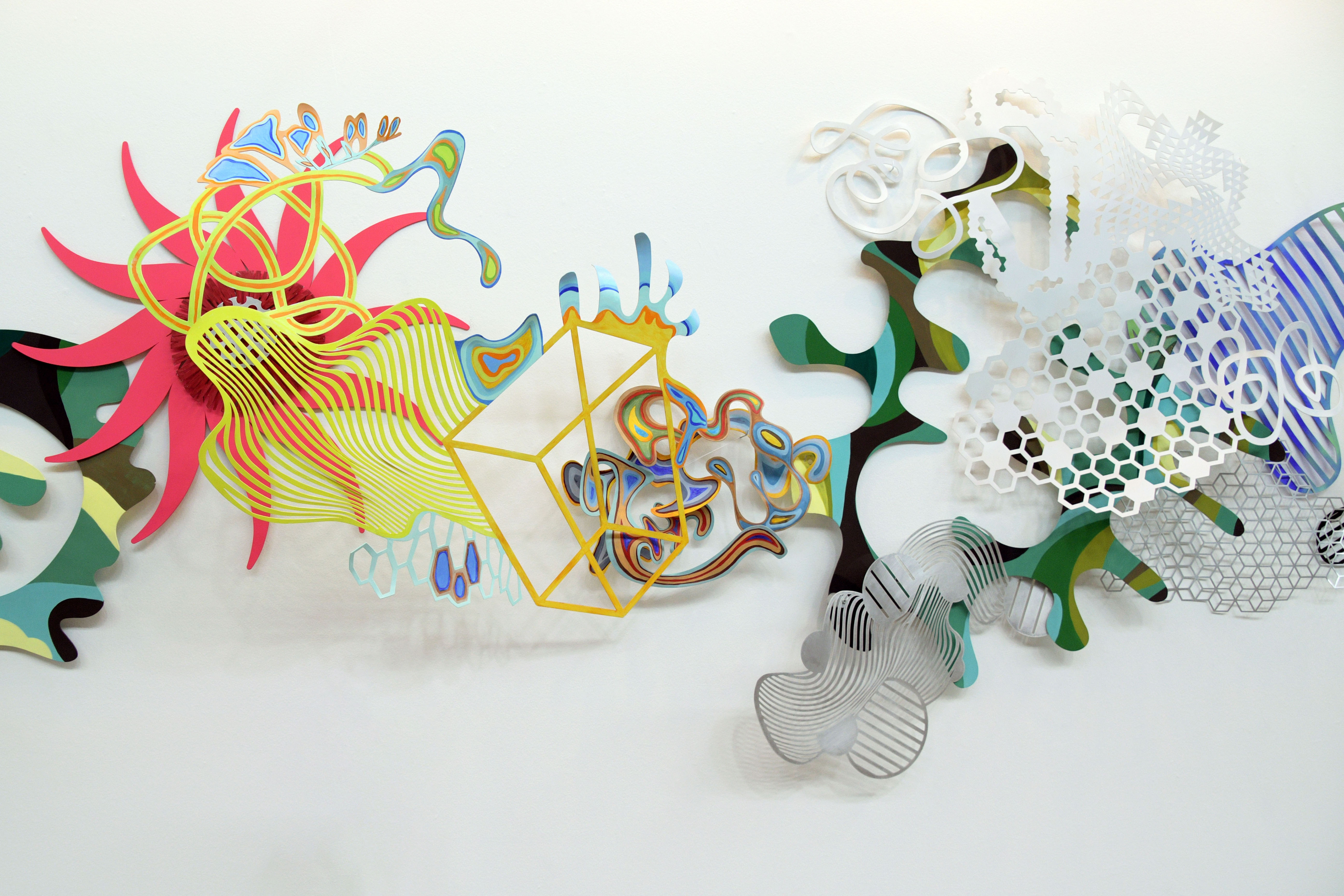
“Flowtopia 2”, (detail), Painted Aluminum Sculptural Installation commission for Urban Outfitters Corporate Headquarters, Philadelphia, PA, 30 x 10 x 3 feet, 2020
Being an art professor, Wendy also experienced the transition to the online classroom with her students. Besides keeping students engaged, they are exploring new models even better than video lectures and saves the time for evaluation and greater discussions. She thinks positively about the inventive factors of online platforms which might lead to new discoveries. For the class of 2020 who have come across the hardships and will graduate from schools, Wendy believes that: “It will be the younger generation that will seize upon new opportunities that emerge out challenges. They will be the ones to find the solutions and experience the great satisfaction that comes with bringing about positive change.”
It’s important to break down barriers and work together
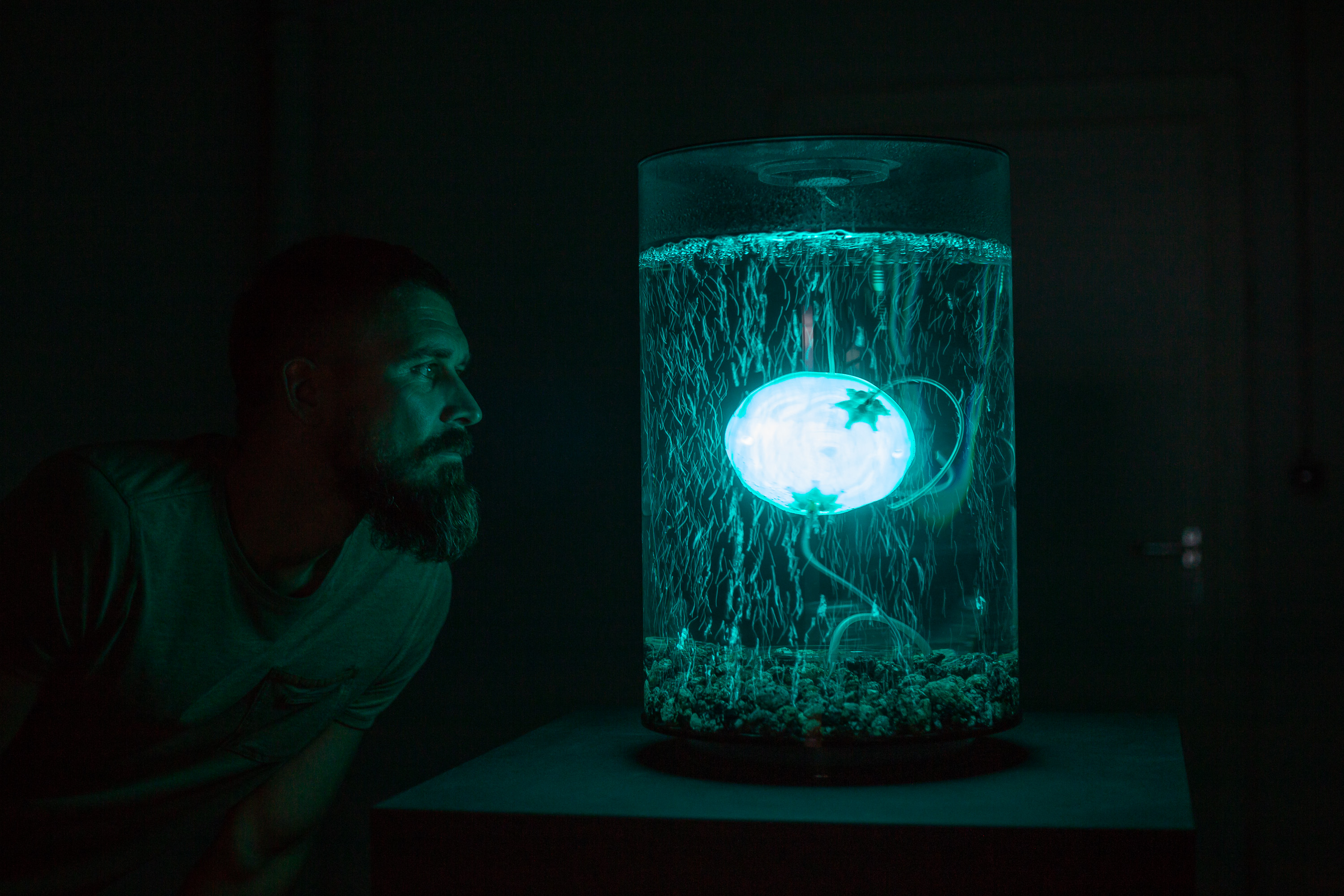 ArchaeaBot by Anna Dumitriu and Alex May, Photo credit Vanessa Graf at Ars Electronica 2018
ArchaeaBot by Anna Dumitriu and Alex May, Photo credit Vanessa Graf at Ars Electronica 2018
If there was no pandemic, Anna Dumitriu should have visited Beijing and attended the opening of “Topologies of the Real” which was the first part of the CAFAM Techne Triennial. Currently, four of her robotic artworks (made in collaboration with Alex May) are in a bonded warehouse in Shanghai, with the exact dates of this Triennial remaining unknown.
 Anna Dumitriu Headshot
Anna Dumitriu Headshot
Anna Dumitriu is a British contemporary artist exploring BioArt, microbiology, synthetic biology, robotics & emerging technologies through sculpture, installation & textiles. Her works blur the boundaries between art and science with a strong interest in the ethical issues raised by emerging technologies. With exceptional acumen, her art specializes in issues related to infectious diseases and therefore she is very interested in the relationship of public health strategies and the rhetoric of the pandemic as well as previous epidemics throughout history.
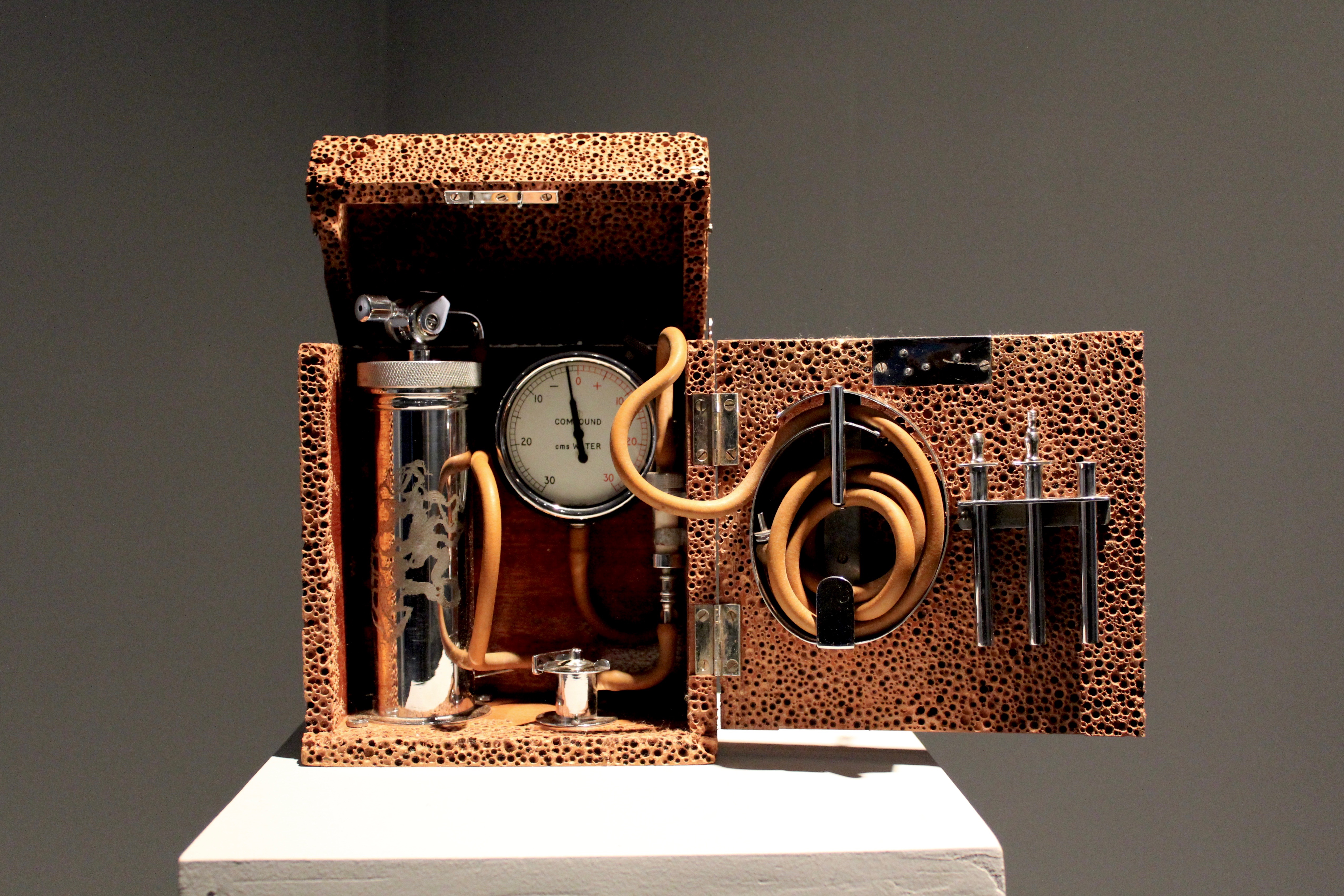 PneumothoraxMachine_1 credit Anna Dumitriu
PneumothoraxMachine_1 credit Anna Dumitriu
When the epidemic happened, she was working on new projects around synthetic biology, “One involving new plant breeding methods in plant science using CRISPR genetic modification techniques (mainly in Wageningen in the Netherlands, entitled “Biotechnology from the Blue Flower” and another “Fermenting Futures” with yeast synthetic biology research in Vienna (Austria).” After she flew out of Austria on the day before lockdown started, she encountered another lockdown in the UK.
 “Ex Voto” pandemic reflections work in progress, credit Anna Dumitriu
“Ex Voto” pandemic reflections work in progress, credit Anna Dumitriu
There’s nowhere we can escape from the pandemic influence on this earth. Inspired by this, Anna has been keeping an extensive collection of stories and research from the very start of the epidemic and she keeps observing how it has evolved and continues to evolve. She has reflected on the relationship of the impact of COVID-19 to previous plague pandemics in history, such as the practice of quarantine and strategies to combat infectious diseases, the scapegoating of certain ethnic groups and the language of ‘war’. She is by extending her “Ex Voto” project and makes a ‘votive’ to document each day of the lockdown in the UK. Anna Dumitriu works at the interface of art and science uncovering past histories to help us consider the future.
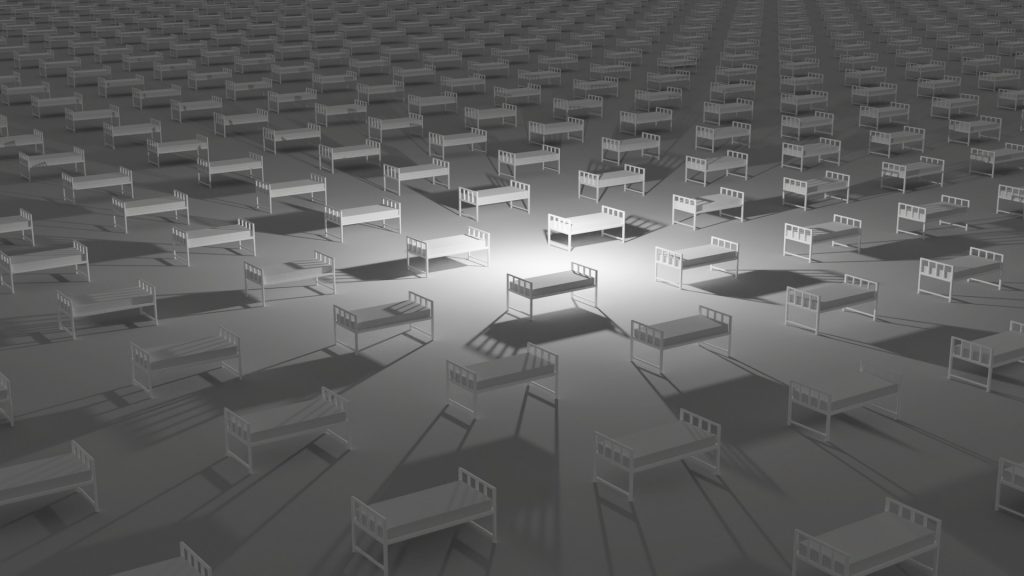 Work in progress computer modelling of “Shielding” credit Anna Dumitriu
Work in progress computer modelling of “Shielding” credit Anna Dumitriu
With the metaphor of a temporary hospital, Anna has also been working on a commissioned work for Art/Data/Health by exploring data around domestic violence. She has focused on the impact of lockdown on those who are in a confined space with abusive partners and express the urgency of this issue while calling for safe spaces and support for victims and survivors of domestic violence. In addition, she has other projects currently in progress, including “Shielding”, “Biotechnology from the Blue Flower”, “Fermenting Futures” and “Susceptible”.

Chicory Plants grown from Protoplasts, credit Anna Dumitriu
It seems striking as it’s the first time that a pandemic has played out across social media and triggered a global slump. Though with setbacks, Anna thought from the positive perspective that there is “an increase in online content and event streaming which helps get the work out maybe even more widely, but it’s not exactly like seeing the real thing.” The world might not return to the status before the crisis happened. Even though some galleries have started to re-open, restrictions of social distancing and limited visitor numbers still exist. As Anna Dumitru puts, “It’s important that artists and organizations continue to break down any barriers and work together and that artists provide us with ways of thinking about and reflecting on the world and on all our situations and our futures.”
Art really can be anything
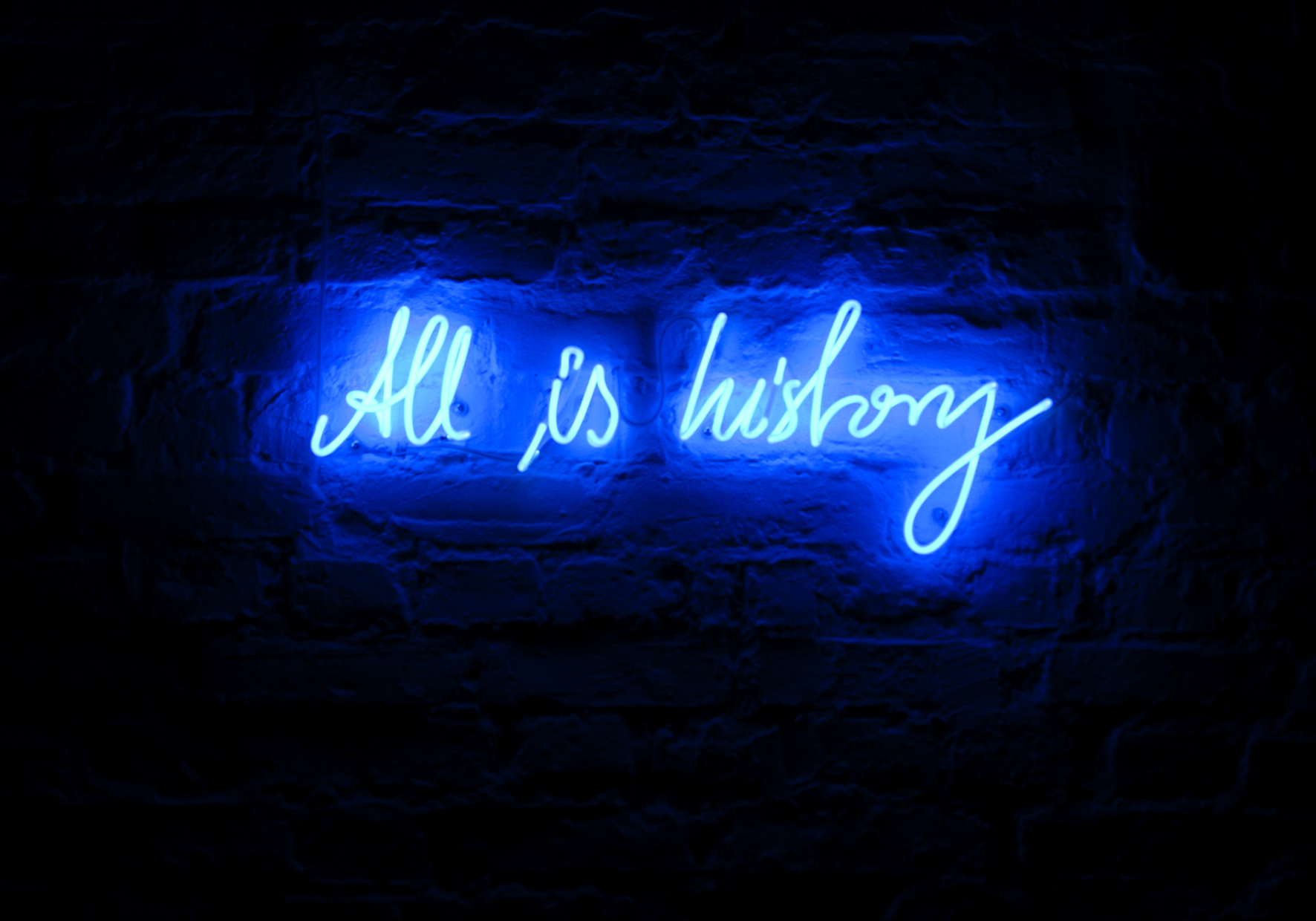
All is history
2012
Neon, 25x75 cm
Michal Martychowiec, a conceptual artist who lives and works in Berlin, has direct contact with professionals working in Chinese contemporary art as he is a visiting lecturer at the China Academy of Art in Hangzhou. He creates conceptual series of photographs, films, drawings, neon images, objects, mixed media installations and environments.
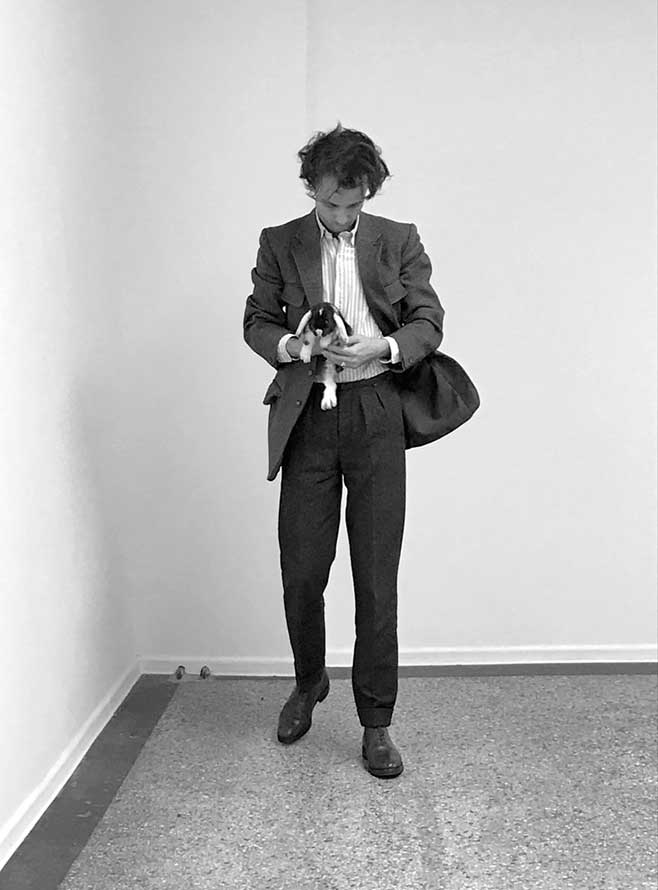
Portrait of Michal Martychowiec
Initially, he got to know the detailed information about COVID-19 as it was shared by his Chinese friends whose families were involved in it. Apart from the predominant concern, he thought the most worrying situation was the possibility of using the COVID-19 pandemic to pursue political agendas. Also, the pandemic made him realize, “How immensely connected all regions are in a global society and how easily an epidemic can spread on an unprecedented scale.” As it develops quickly, the pandemic ceases to be a concern for a region but rather the whole world and it further becomes a fight for all of us that are confronted with it.
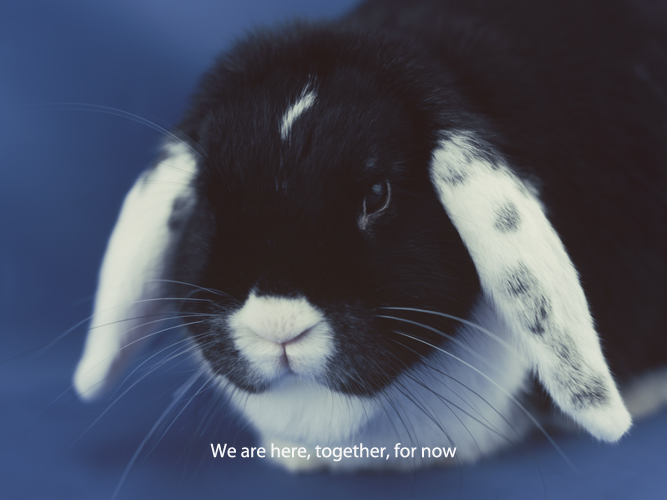
Still from ‘Pixelated Venus’ 2017, courtesy of the artist.
Through diversified means, artists and art institutions around the world respond to the suspended state of art activities. The suspension of exhibitions and events, instead has offered Michal quite a good time to concentrate on the projects he has put aside. One of fruitful achievements is that his notes have been collected and will be published in 2021 (both in the form of a book and an online archive called “Complete Knowledge”.) “I reminded myself of several ideas that I might have already forgotten and I have decided to pursue them further,” said Michal.
‘The fire and the rose are one’ is an extending project Michal has been working on. With positive and constructive implications rather than negative ones, it is a film (second in a trilogy) “oscillating around the topic of history while evaluating the ideas of the ‘end of history, destruction and ruin,” as Michal puts. It is intended to ask about “our current historic positioning (perhaps now more valid than ever) through reconstruction and replacement of narratives of the past and future.” With another ongoing project entitled ‘Sous les paves la plage’, a slogan of France in 1968, Michal aims to explore ideas of freedom and power in the neoliberal/consumption-oriented world.
Sous les pavés, la plage ! : 1967
2019/2020
Alluminium display 60x85 cm, photographic print on aluminium, 40 000 glass crystals
Michal holds that, “As art does not have a predetermined function or role; it really can be anything.” By adapting to the changing environments, artists respond and carry on with their creations. “Different modes of engagement can be created. In fact, with many spheres of our lives being already online, this means they are already there.”
Connection is now growing and emerging without borders
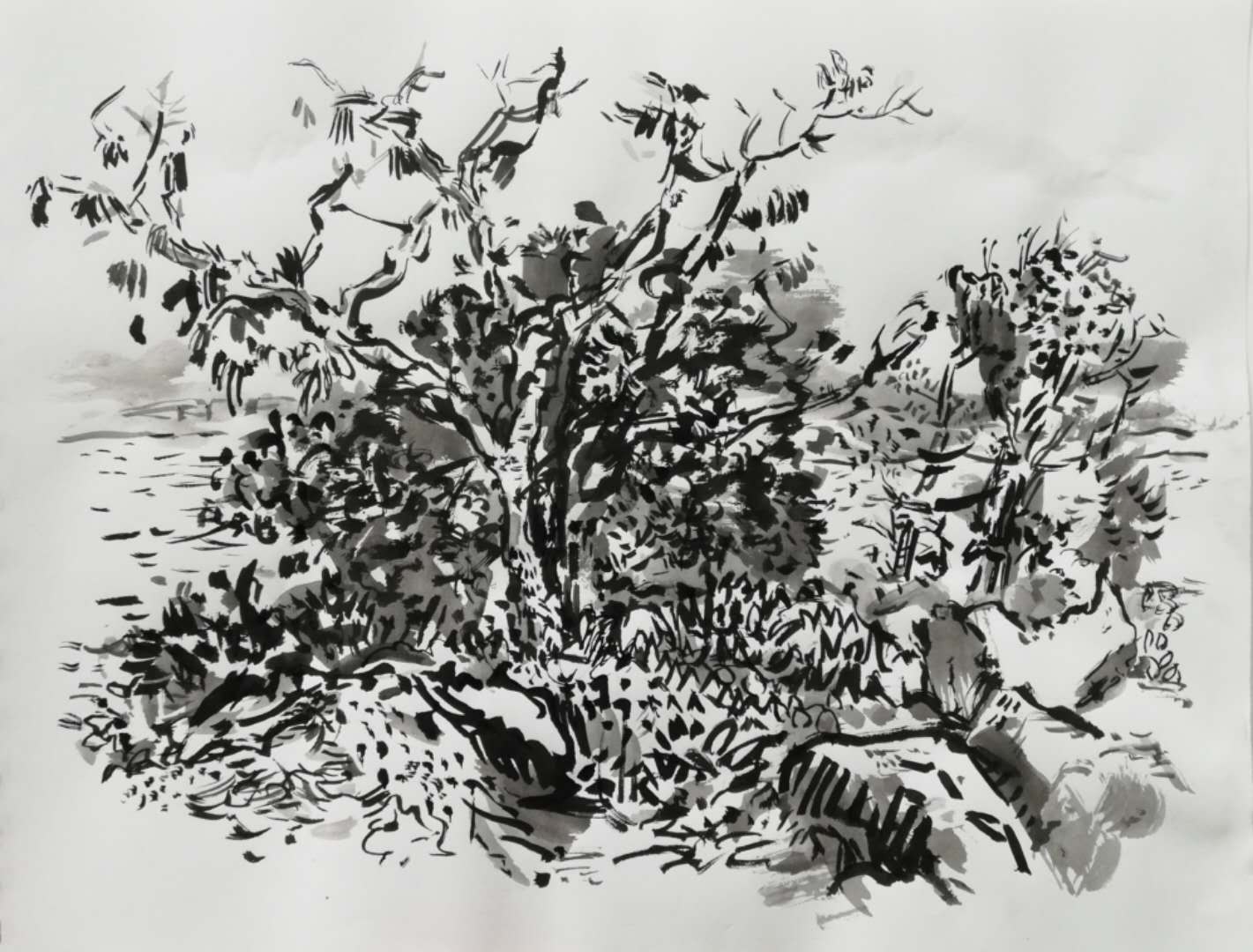
The (ink and wash) scenery alongside the Connecticut River near where David Brubaker was staying.
Wuhan, a city in the central part of China, seemed to be the eye of the storm in this pandemic. It might arouse complicated feelings for anyone who has undergone the influences brought by COVID-19.

The Portrait of David Brubaker on June 12
Being an American teacher who used to living on campus at Hubei University in Wuhan, David Brubaker has experienced it twice. He left Wuhan for California on February 6, 2020 and arrived in Connecticut on February 20 after quarantine. In mid-April, his friend in Hangzhou sent face masks to him by express mail because of the pandemic spread in the US and shortage of masks in Connecticut. Due to the situation of the pandemic prevention between China and the US, currently he cannot return to Wuhan and has to stay in Old Lyme, a town with a population about 7,000.

David Brubaker's pen and ink drawings from February during the two weeks of quarantine in California
In addition, David Brubaker is also a volunteer and advisor for the United Art Museum and has contributed a lot to contemporary art exhibitions and events that took place in Wuhan. He holds that, “Artists have a special role to play, and the pandemic is a reminder of this.” Besides artworks can communicate facts and provide information for reflection, they can also have a unifying role that is more basic as they communicate understanding. As he further puts it, “artists also convey that facts and acts have meanings because they are rooted first of all in the sensuous nature of human beings who find their way even in difficult times.”
The sudden outbreak and spread have strengthened thinking and feelings of what is of ultimate value, as David puts, “We are all together equally when facing life threatening situations including the spreading of this particular virus.” David recalled the impressive moments he experienced in the previous months during the pandemic, the news images of the complete dedication by the staff at hospitals in Wuhan who tried their best to save and care for patients, construction workers that caught brief moments of rest as they completed the new emergency hospitals at an unbelievable speed, the immediate commitment by people everywhere in Wuhan who did their part by staying at home and hospital staff and workers in New York and Connecticut who worked in similar emergency conditions to save people. “The greater the risk to actual and existing life, the greater the need to protect, cherish, and celebrate it in each case. Most important of all is to stay in the present to save and protect existing lives now. This feeling has been expressed by people in Wuhan who use social media, again in daily newspapers published in New York and in media reports that continue here,” said David.
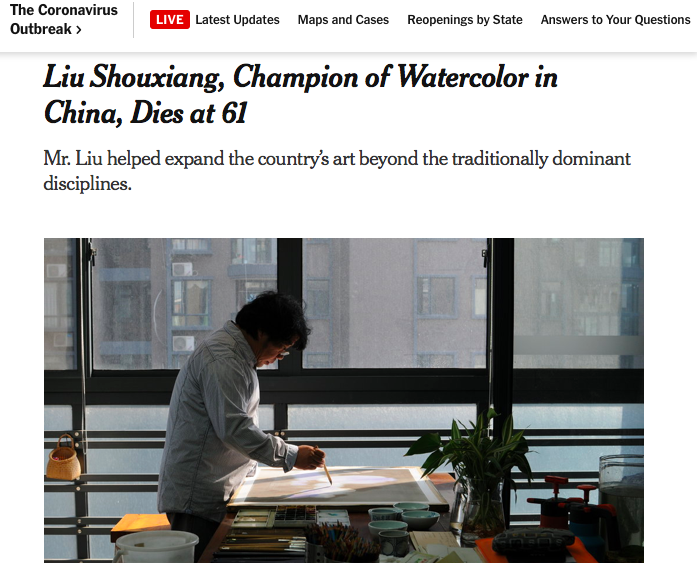
On May 4th, the news about Liu Shouxiang was included in the stories collected by The New York Times to celebrate the lives of those lost to the pandemic.
“All this dedication and care offers many lessons,” said David, “This emergency pandemic around the world is a reminder of how we do depend on each other and aid each other in need. Another lesson is that each of us—at work, at home, with family or in everyday life—does ultimately contribute and make a difference, along with others, to how events actually unfold in the world.” David also shared a particular story that during his quarantine in California, he learned about the loss on February 13th of Prof. Liu Shouxiang, a watercolour painting teacher based in Wuhan whose retrospective exhibition was just held last year at the Wuhan Art Museum. On May 4th, the news about Liu Shouxiang was included in the stories collected by The New York Times to celebrate the lives of those lost to the pandemic. The matching care and sorrow for friends, family, colleagues and community have also been taken into consideration by the writers and editors in New York. For him, this was very moving as, “It is a crystallization of the true meaning of authentic globalization. It is another signal of a feeling of connection and community between individual human beings that is now growing, emerging and crossing borders at this moment.”
The pandemic might have unpredictable influences on the life of everyone in the world. At speed, art colleges and institutions are adapting and programing classes, communications, virtual exhibitions and events online. For David, art communities and intercultural exchanges through the arts will always remain important, “The sharing and communication of cultural practices and values will become more and more important as a way to maintain and affirm the sense of connection and community between people everywhere in the world.”
Text and interviews conducted by Sue Wang
Images Courtesy of Wendy Letven, Anna Dumitriu, Michal Martychowiec, David Brubaker and Fou Gallery


